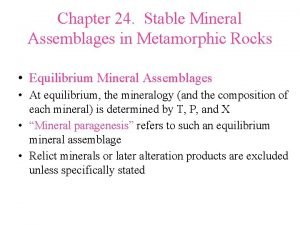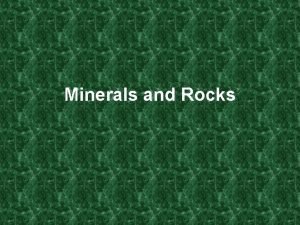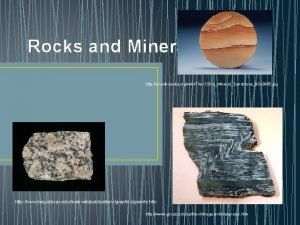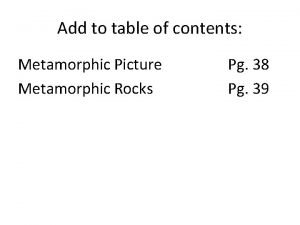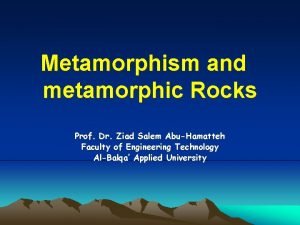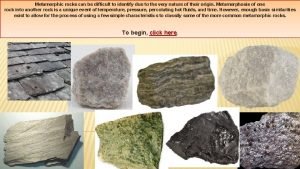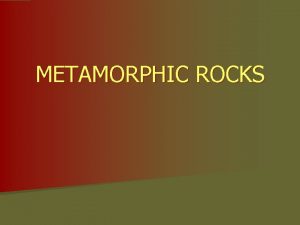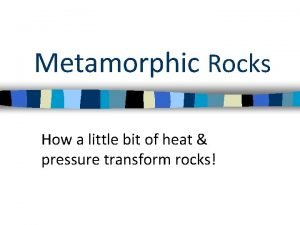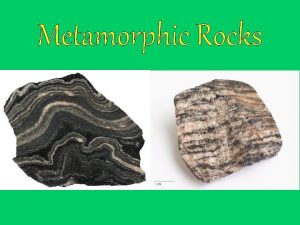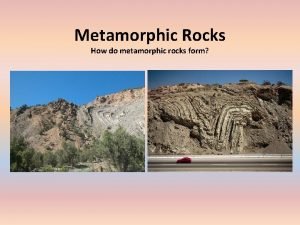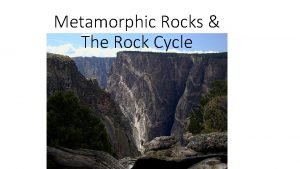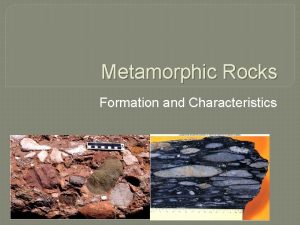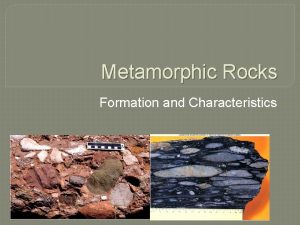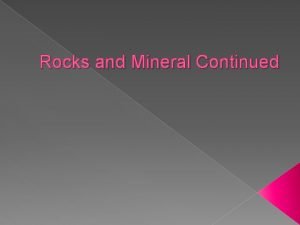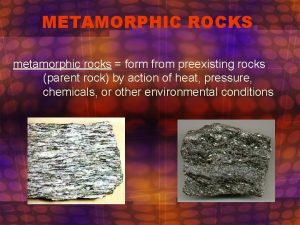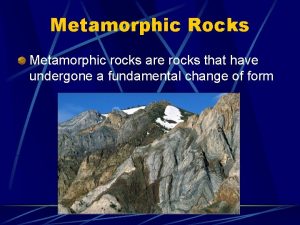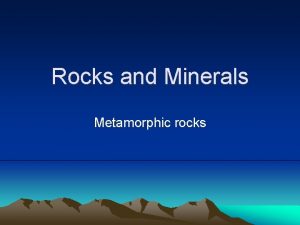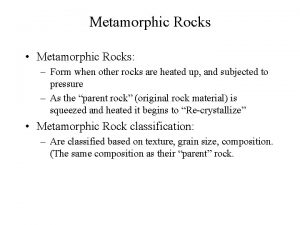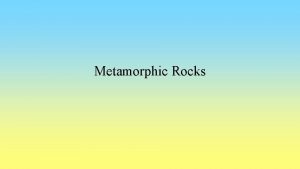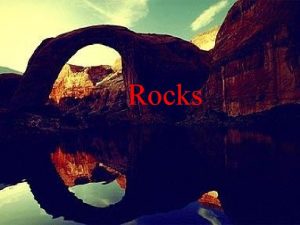METAMORPHIC ROCKS Heat Temperature Recognizing Metamorphic Rocks Meta















- Slides: 15

METAMORPHIC ROCKS Heat + Temperature

Recognizing Metamorphic Rocks • Meta = Greek for change • Morphe = Greek form • Under enough heat, any rock will become igneous; • But if there is enough pressure to keep it solid, it may just change without reaching its melting point!

Metamorphic Minerals • Remember Fractional Crystallization? Bowen? • All minerals are stable at certain temperatures and crystallize at different temperatures. • If rocks containing minerals change due to heat + pressure, scientists can tell what conditions created the new minerals. Talc, Mica and Garnet

Metamorphic Textures • Two main groups: • Foliated • Nonfoliated • Geologists use metamorphic textures and mineral composition to identify metamorphic rocks.

Foliated Rocks • Layers and bands of minerals are characteristics of foliated metamorphic rocks. • High pressure flat, needle- like crystals with long axes perpendicular to the pressure. • Parallel alignment of minerals.

Nonfoliated Rocks • Composed mainly of minerals that form with blocky crystal shapes. • Quartzite (sandstone) and marble (limestone) are common examples • Porophyroblasts: new metamorphic crystals that grow large while surrounding minerals remain small.

Grades of Metamorphism • Combos of temperature + pressure result in different ‘grades’ of metamorphism. • Low-grade: Low temp and pressure with specific minerals/textures • High-grade: High temp and pressure with specific minerals/textures • Intermediate: between

Regional Metamorphism • Temperature and pressure affect large areas of the Earth’s crust. • Ranges in grade from low to high grade. • Results: changes in rock type, foliation and folding/deforming of rock layers in an area.

Contact Metamorphism • When molten material— igneous intrusion—comes in contact with a solid rock. • High temp, low to moderate pressure • Much more abundant with intrusive igneous rocks than with extrusive; affects surrounding rocks.

Hydrothermal Metamorphism • Super hot water reacts with rock and alters its chemical and mineral composition. • Fluids coming in and out of rock alter mineral composition and texture. • Chemical changes common. • Valuable ores (gold, copper, zinc, lead) can be formed.

Economic Importance • Modern life is only as convenient as it is because of naturally occurring Earth materials. • Metamorphic processes create gold, silver, copper and lead as well as many non-metallic resources.

Metallic Mineral Resources • Occur mostly in the form of metal ores. • Precipitated through hydrothermal solutions: • Concentrated in veins • Spread throughout rock mass • Most deposits are metal sulfides such as galena or pyrite.

Nonmetallic Mineral Resources • Metamorphism of ultrabasic igneous rocks produces the minerals talc and asbestos. • Talc: very soft; used as dusting powder and texture in paints. • Asbestos: not combustible; used in fireproofing / insulating materials. • Graphite: formed by metamorphism of coal!

The Rock Cycle • Metamorphic rocks form when other rocks change. • Igneous crystallize magma under Earth or on surface. • Sedimentary form from lithified minerals and sediments • Metamorphic change both with temperature and pressure.

The Rock Cycle • Will rocks stay the same? • Probably not. • Any rock can be changed into any other type of rock. • Continuous changing and remaking of rocks is called the rock cycle. • No one single way; many different ways to convert rocks.
 Types of igneous rock
Types of igneous rock Igneous metamorphic and sedimentary
Igneous metamorphic and sedimentary Meta synthesis vs meta analysis
Meta synthesis vs meta analysis Meta means change and morph means heat
Meta means change and morph means heat Minerals concept map
Minerals concept map Acf and akf diagrams
Acf and akf diagrams Venn diagram of intrusive and extrusive igneous rocks
Venn diagram of intrusive and extrusive igneous rocks Metamorphic rocks properties
Metamorphic rocks properties Table of contents picture
Table of contents picture Nonfoliated
Nonfoliated Metamorphic rocks
Metamorphic rocks Meta means morphe means
Meta means morphe means Marble quartzite greenstone and anthracite
Marble quartzite greenstone and anthracite Metamorphic rock facts
Metamorphic rock facts Metamorphic rocks examples
Metamorphic rocks examples Non foliated metamorphic rocks
Non foliated metamorphic rocks





